Williams Gorgar
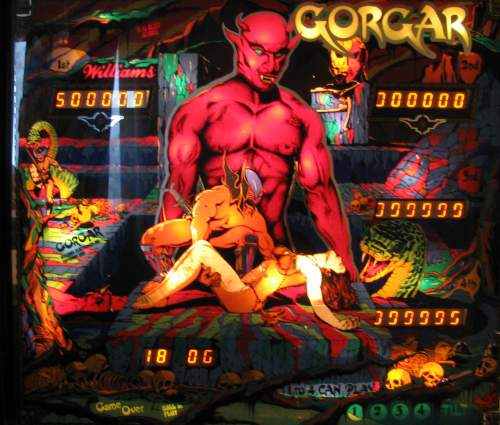
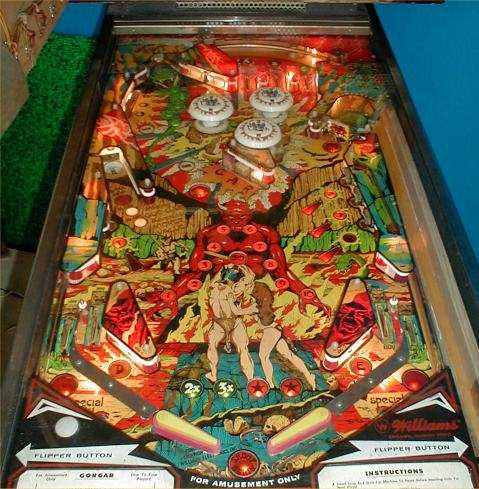
Gorgar, or Corgar as some people seem to spell this pinball machine, is one of the most popular games of the early eighties Williams made. This was not because of its special gameplay, but because it was the first talking game ! And hearing 'Gorgar speaks' seems to have made quite an impression on a lot of players.
The rest of the soundtrack is very simple: it's a heartbeat that goes faster and faster the longer the player keeps the pinball in play. Although it's a simple effect, the increase in speed is very subtle and will get the adrenalin of the player flowing. Whitewater is a more recent pinball game that uses a similar technique, the background tune also plays faster and faster the higher raft you get.
Gameplay
Gameplay of Gorgar is average, even for a game of this age. It's not a boring game, it has quite a lot
on the playfield: rollovers, bumpers, drop targets, a scoop, a spinner, .. all on the top half of the playfield.
But Gorgar is not a very fast game full of action.
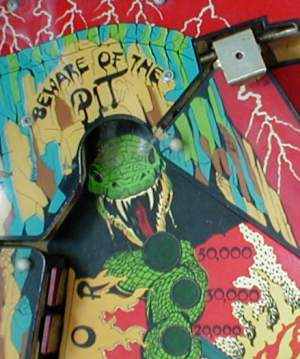
The magnet (Snake Pit) in the back left of the playfield is a nice feature. You shoot the pinball in the snake pit and the magnet below the snakes head will activate for a few seconds and hold the pinball.
My game
Been there, done that. Bought the game non-working, had the mpu checked by Leon of Flipper-pinball-fan. Fixed some other small problems (look below at the tech tips), shopped the game and played it for a few months.
It was in quite good condition (no wear on the playfield, all plastics ok, ..) but gameplay was a bit repetitive. When I had to make room for another game I bought it got sold.
Things to look for when buying
Check the backglass ! The red ink on Williams backglasses is very fragile and will wipe off when it gets wet ! Don't try to clean the red ink on this backglass !
Tech tips
- Although the cpu and driver board were tested, they didn't work when I put them
in my machine. When I pushed the diagnostic button, both leds stayed on
(they should blink 2 times if everything is ok).
So how do you solve this ? As the boards tested fine on a test-bench, the problem had to be a short somewhere an a connector. So I unplugged all connectors (except power, top left on the cpu board) and each time added a connector (power off !) to see on which connector the short came back. - Next problem then: the machine still didn't go in attract mode.
You need to have batteries in a Williams System 6 the game or it will not start !!
Check test point 3 (TP3 is left of the battery holder), it should have around 4 vdc. If it doesn't: check the battery holder. Mine was corroded so I soldered a new one to it (used wires so the holder is off the board, so if it leaks it can't damage the pcb). - A trick to get the game working without batteries is to quickly switch it off and on again so there's still a bit of power left on the mpu board..
I'll explain here one repair I did to the displays. It will show you that it's not very difficult to troubleshoot problems, and that you don't have to fear the worst (bad ICs) from the start.
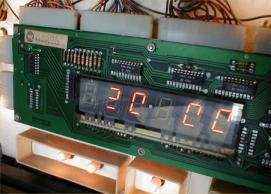
As you can see on the picture, the problem was that both the master display, player one and player 2 display all had one segment off.
First thing to do was to try to find where exactly the problem is caused:
information shown comes from the cpu board, goes to the master display
board, and then to the slave displays too.
So I switched the connectors of player 2 and 3 (display for player 3 and 4
were working correct !) and yes - the problem was swapped too.
This meant the display of player 2 (and the others probably too) was ok
and the problem was (probably) on the master display board itself.
(it could have been possible there was a bad connection to the
slave boards - but as all 3 displays had the same
segment off, this would have been a big coincidence..)
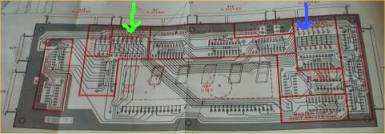
Time to look at the schematics then.
These learned me that it was segment 'c' which was off on all displays.
Displays are driven by data lines - there's one for each segment
of 1 letter/number, and a data line to say which letter it is (10, 100, 1000, ..)
so the combination of these drives all characters.
Something else I found on the schematics: parts for player 3 and 4 are in
the red box at the top right of the display (blue arrow), and the master, player 1 and
2 displays parts are left/top of the display glass (green arrow).
The problem would most probably be caused by a fault in that last part,
as all 3 displays have the same problem..
Time to take the dmm out now.. there's a row of 10k ohm resistors for the segments.. and yes, the 3rd resistor, which drives the 'c' segment, was bad. Problem found !
So.. I replaced the 10k ohm resistor, tested the board and.. yes, everything works !
An easy fix for this problem.. If all resistors would have been good, I would have traced
everything else on there.. just follow the schematics and see what is on the path, there
probably is a problem with continuity. If there wasn't a problem with continuity, it would probably
have been the IC which drives it.. then you have to test with the board switched on to see if
there was any current through the resistor, and if not, where in the path it was stopped..

Trivia
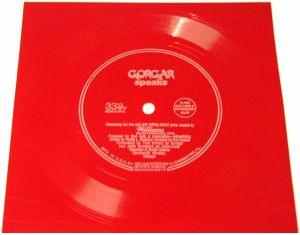 Gorgar was the first talking game produced.
Gorgar was the first talking game produced.
There is a version of the flyer that includes a 45rpm record with the sounds the machine makes.
That way operators could hear the sounds, to convince them to order the game.
Gorgar was probably the first electronic game that used a magnet to catch the pinball.
